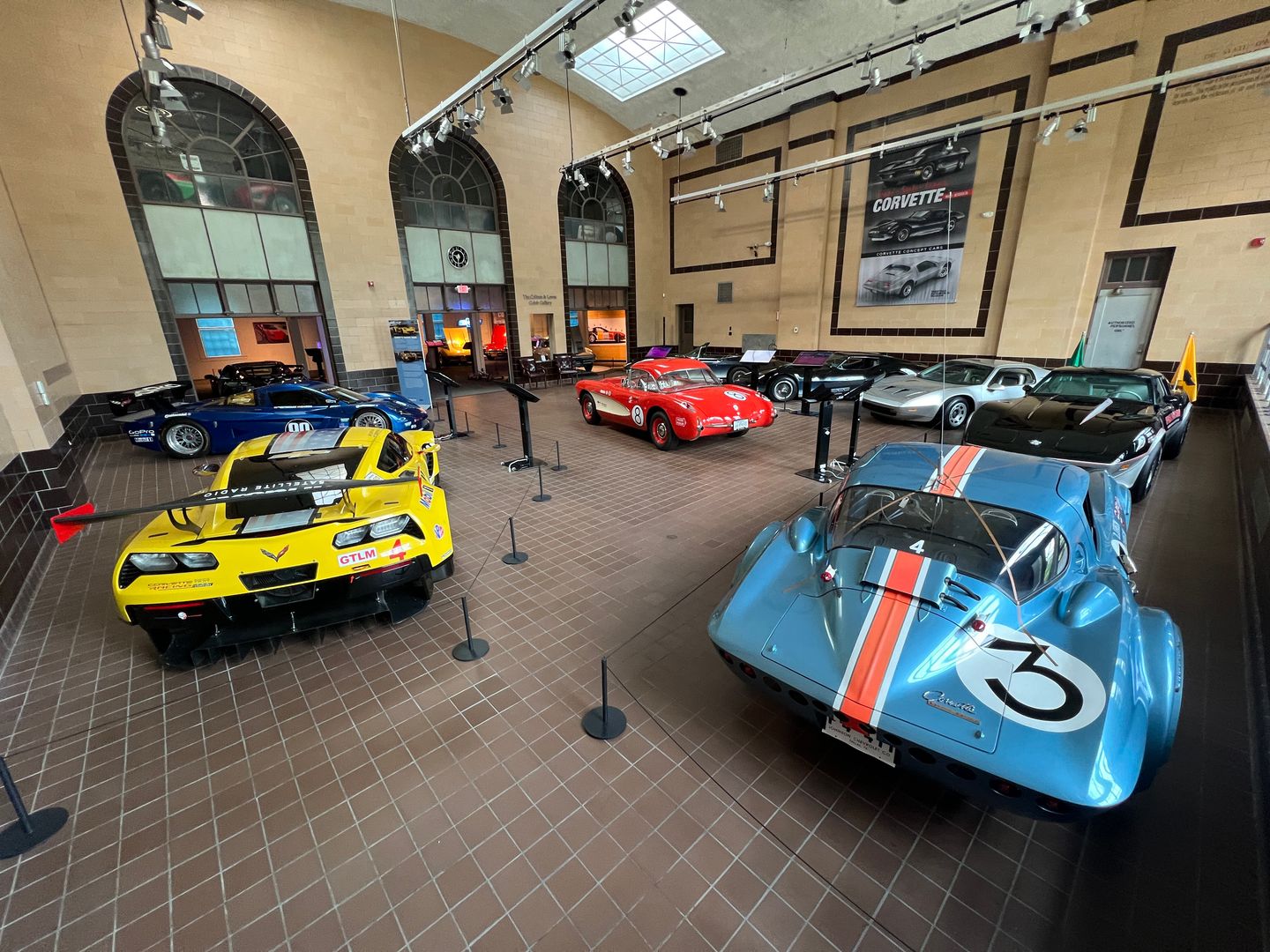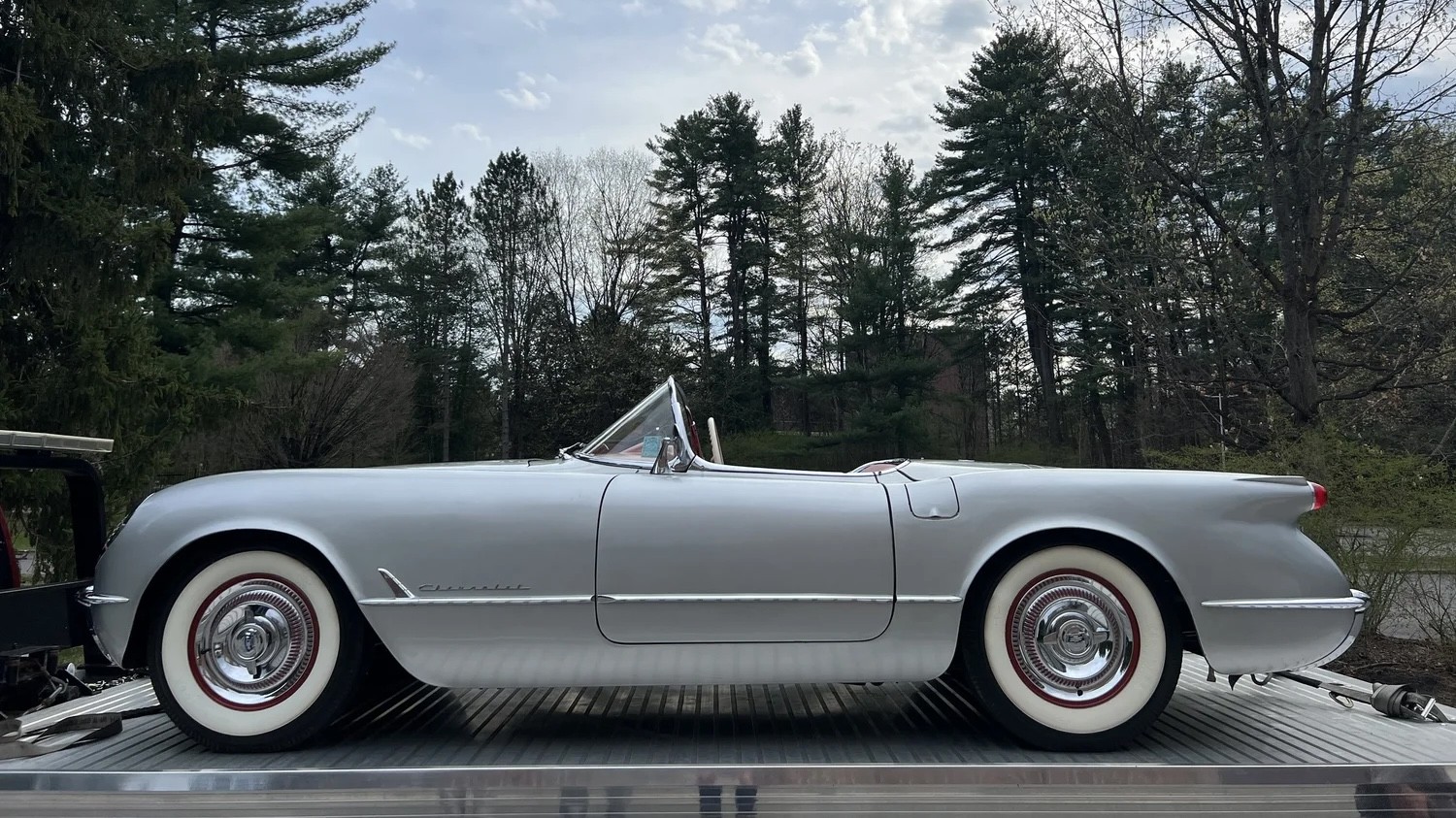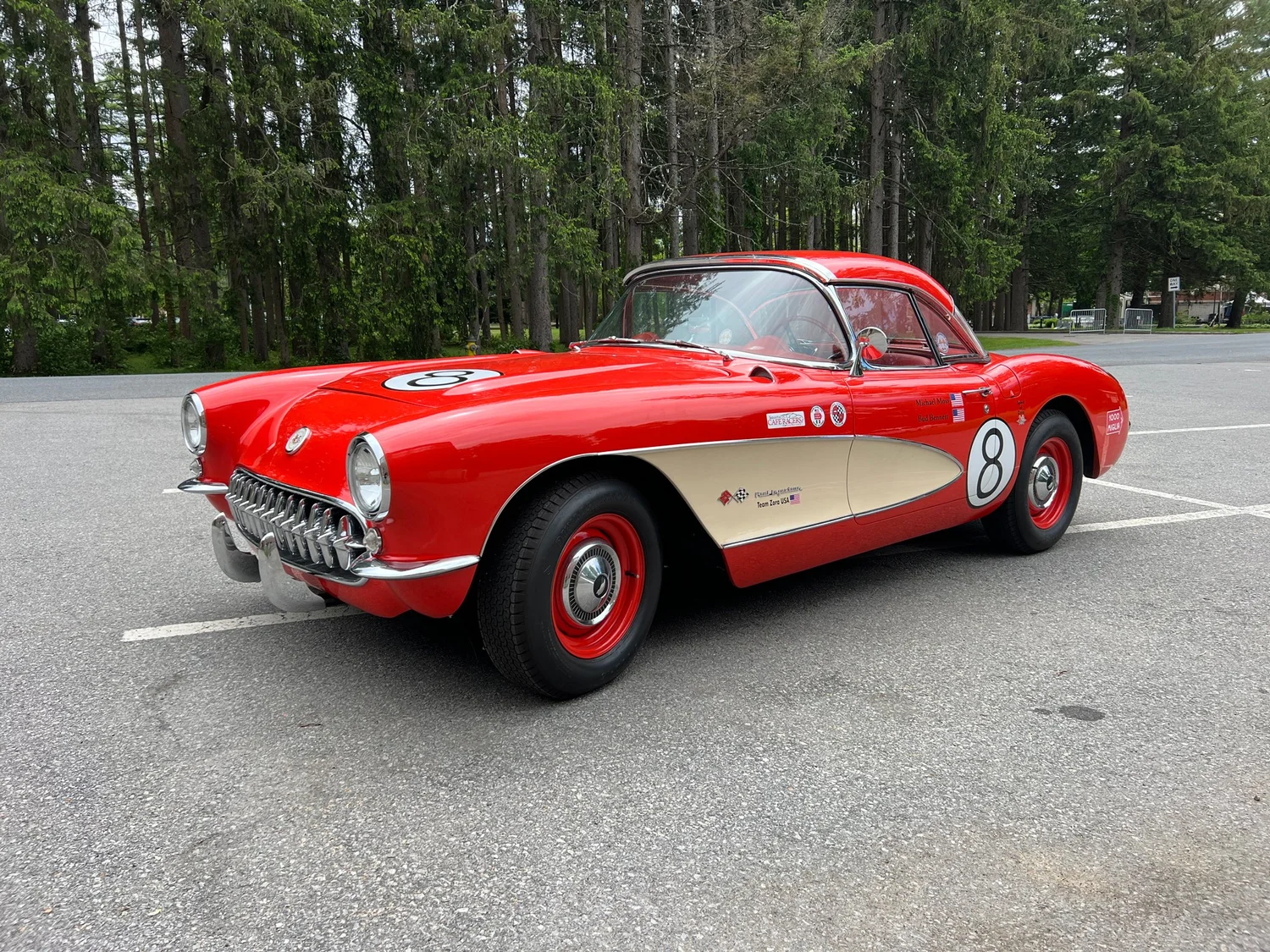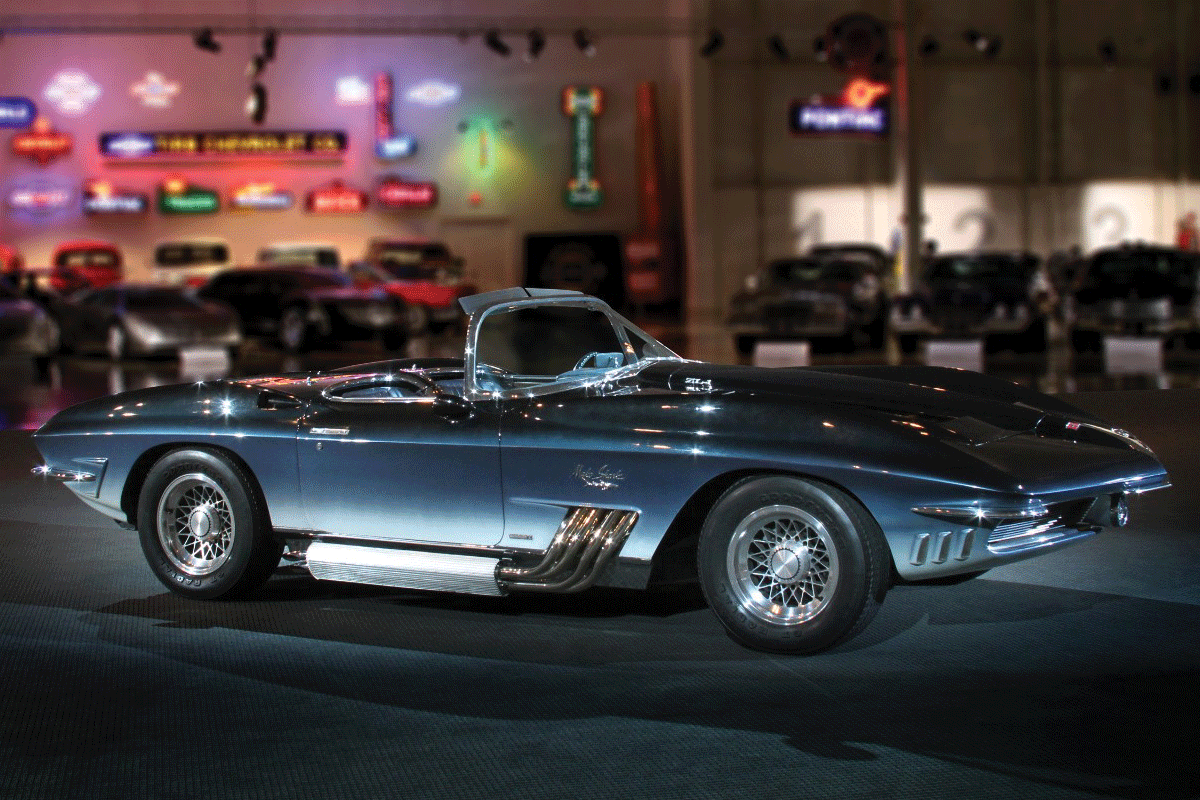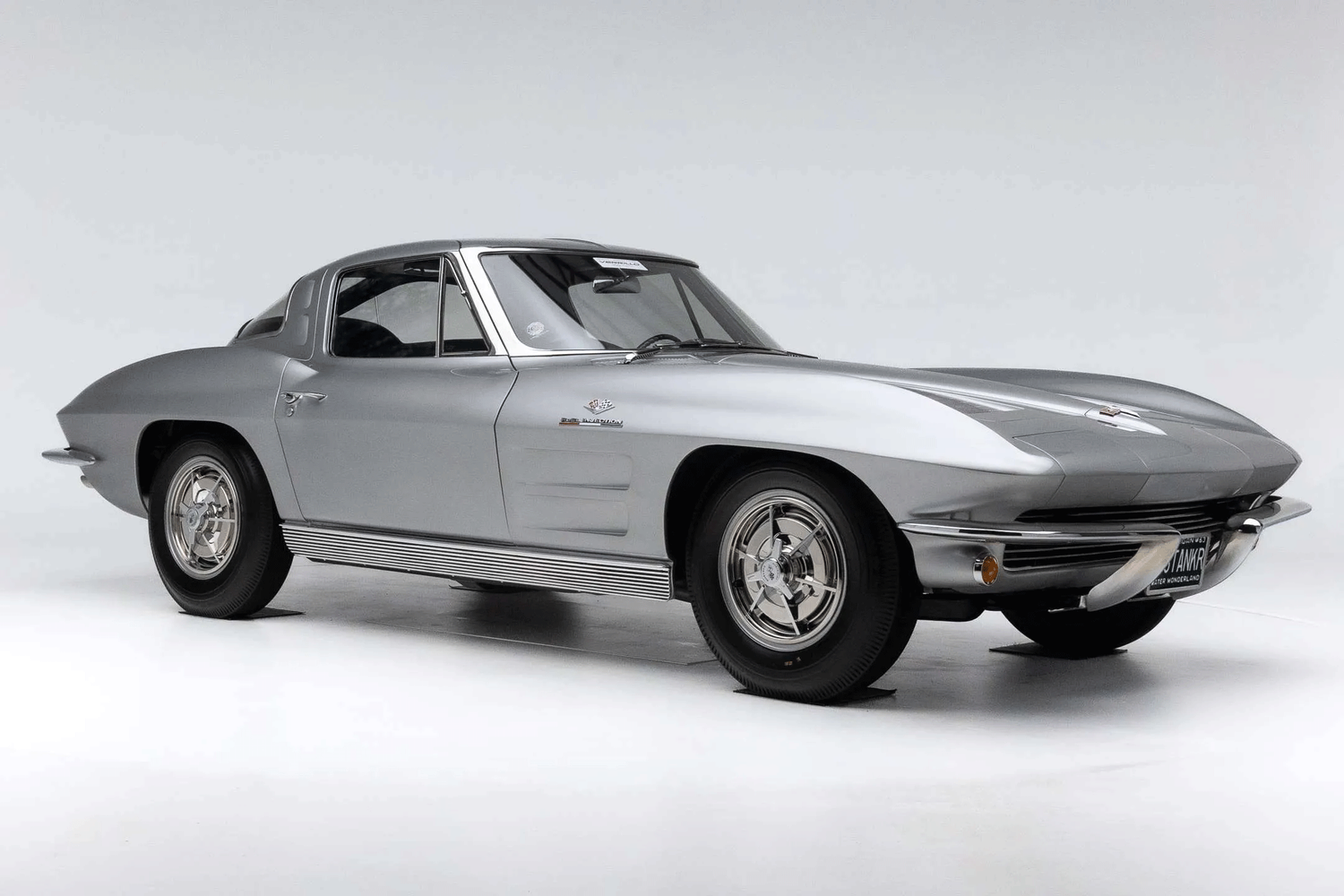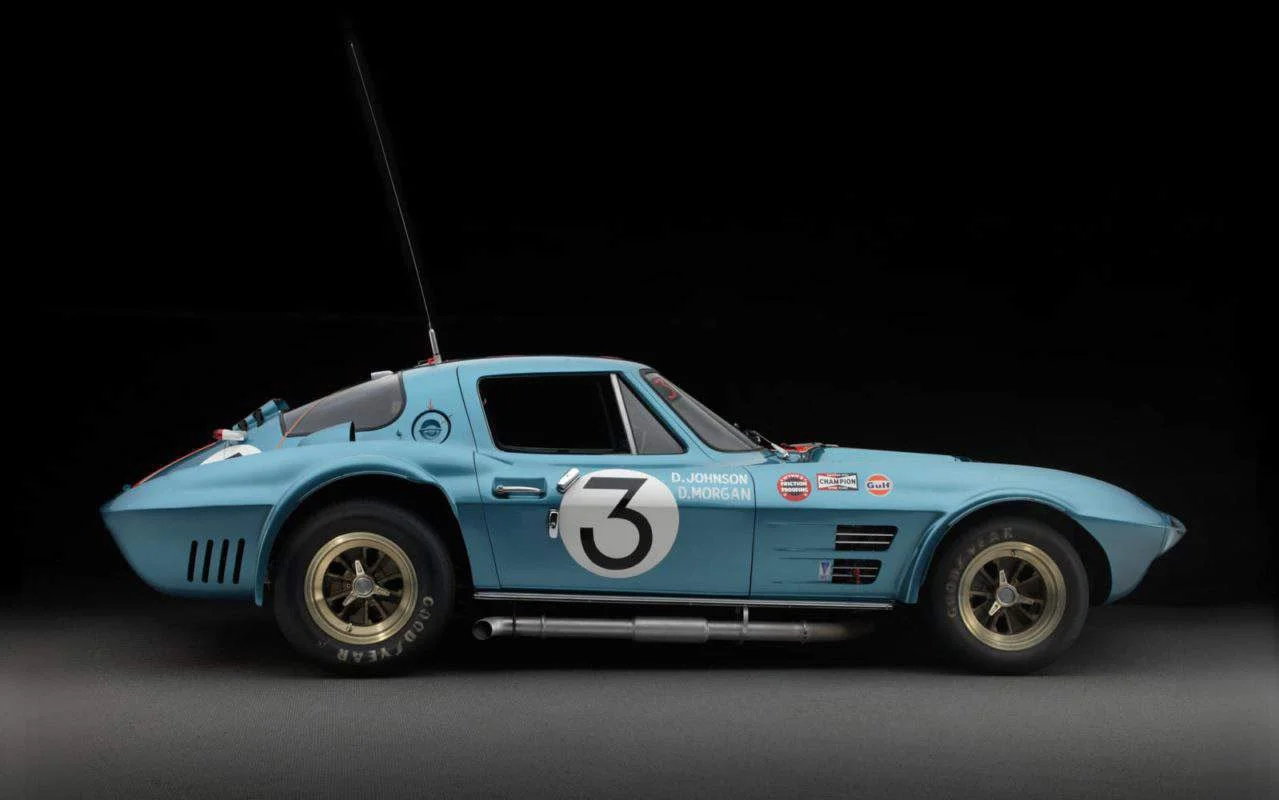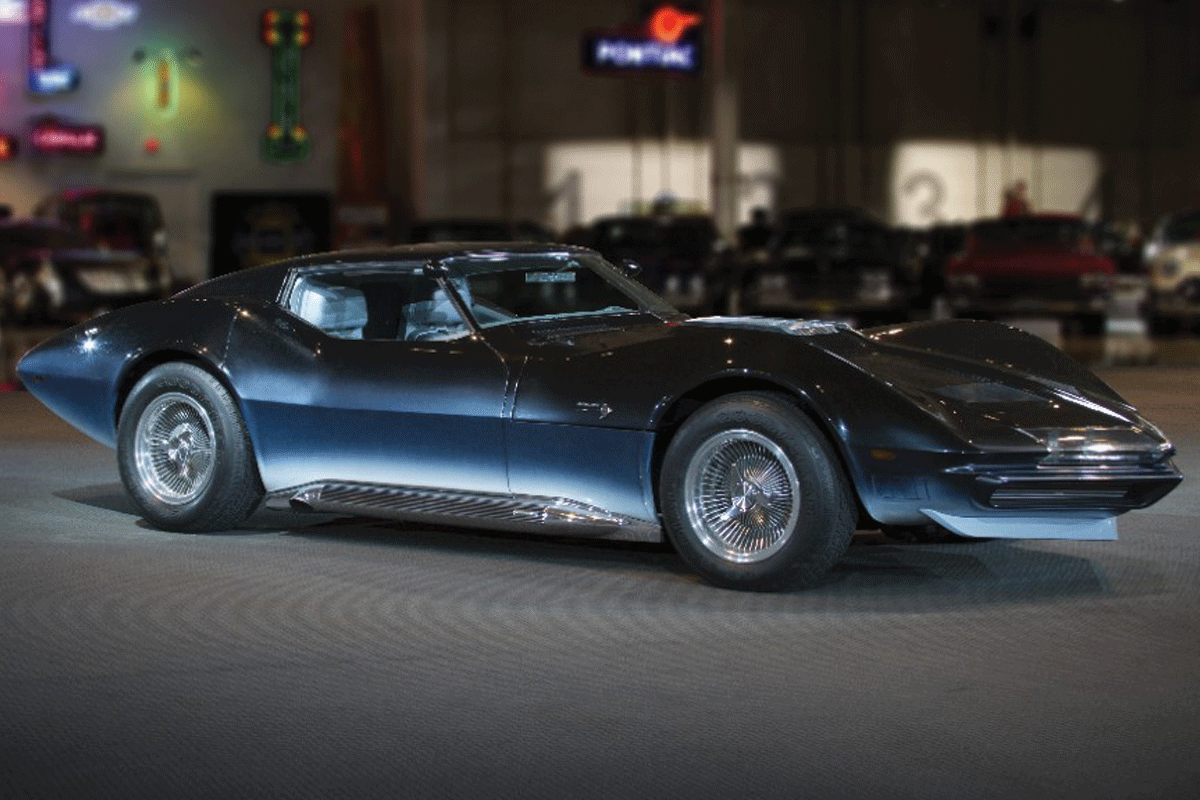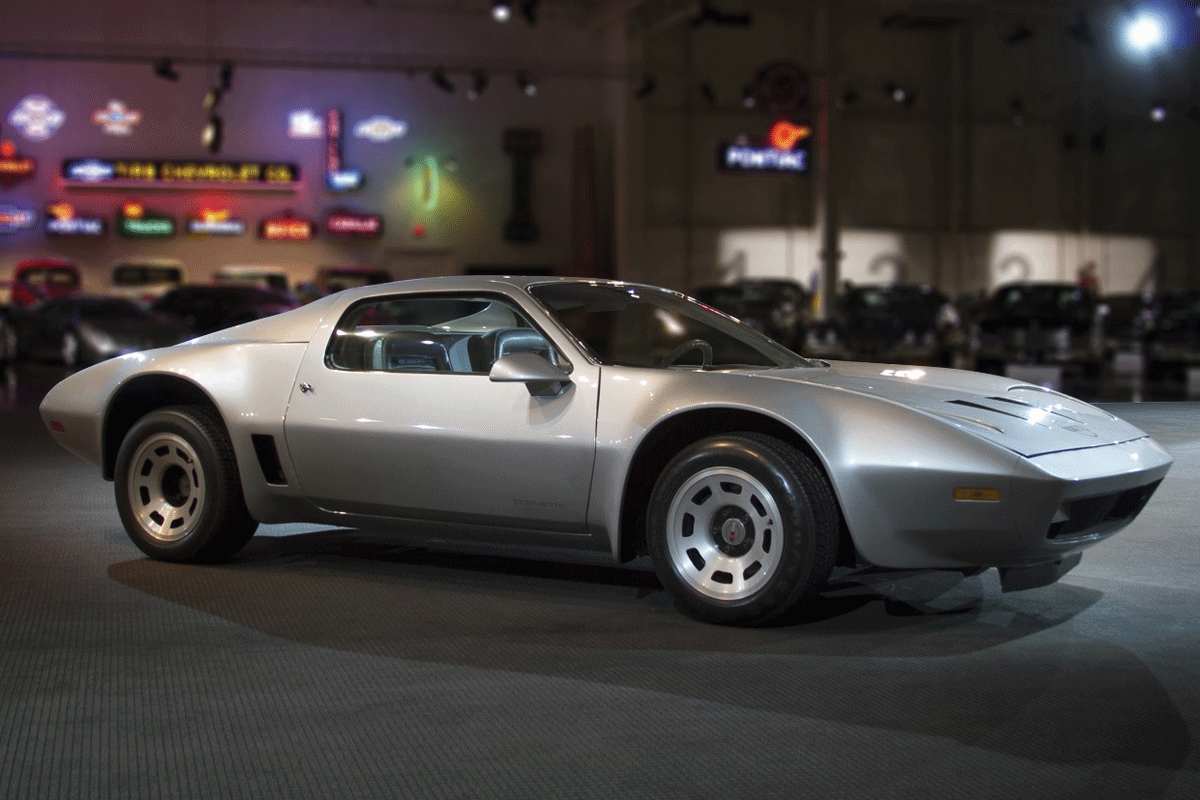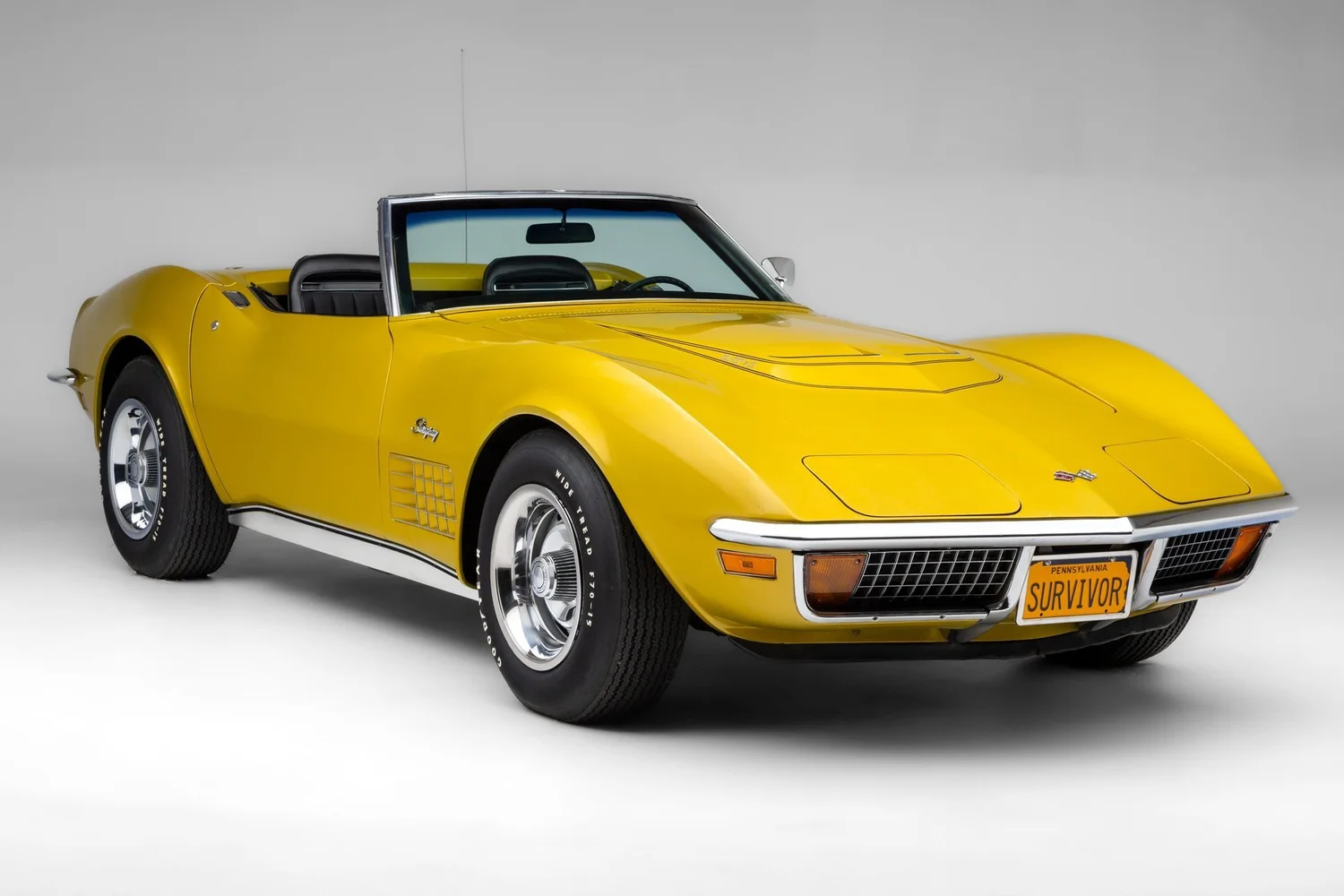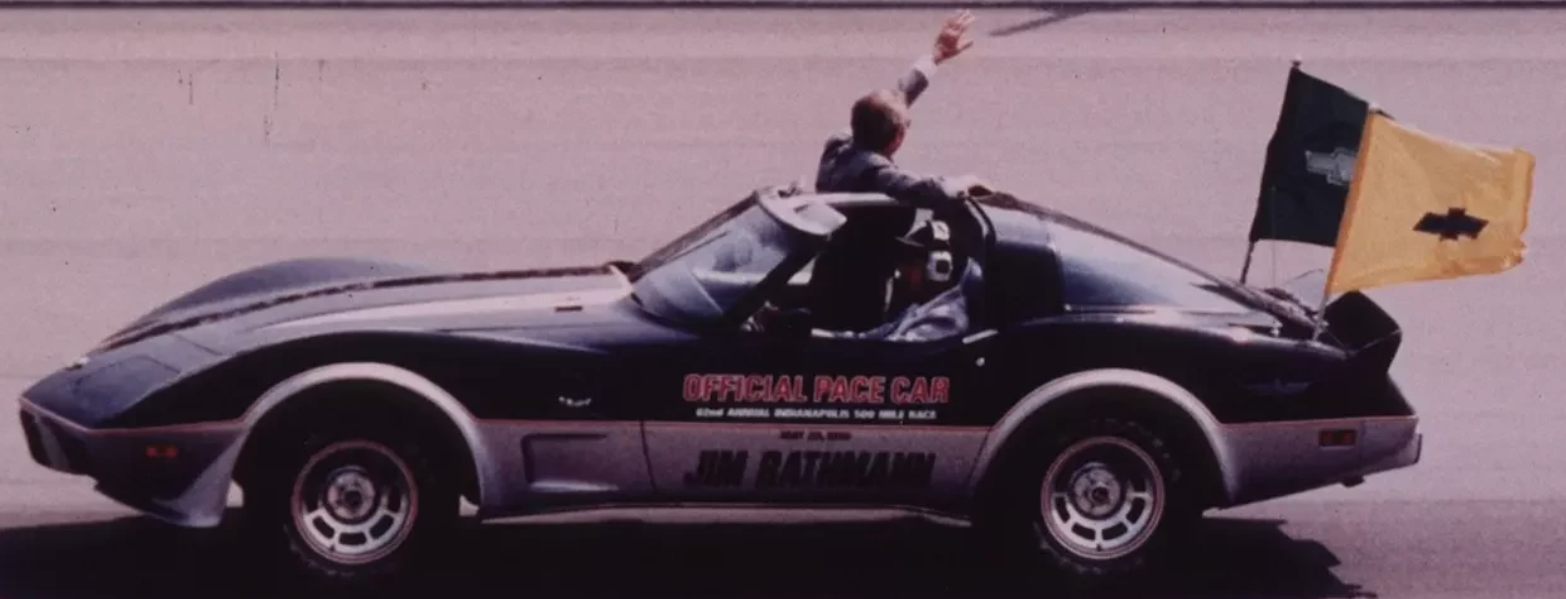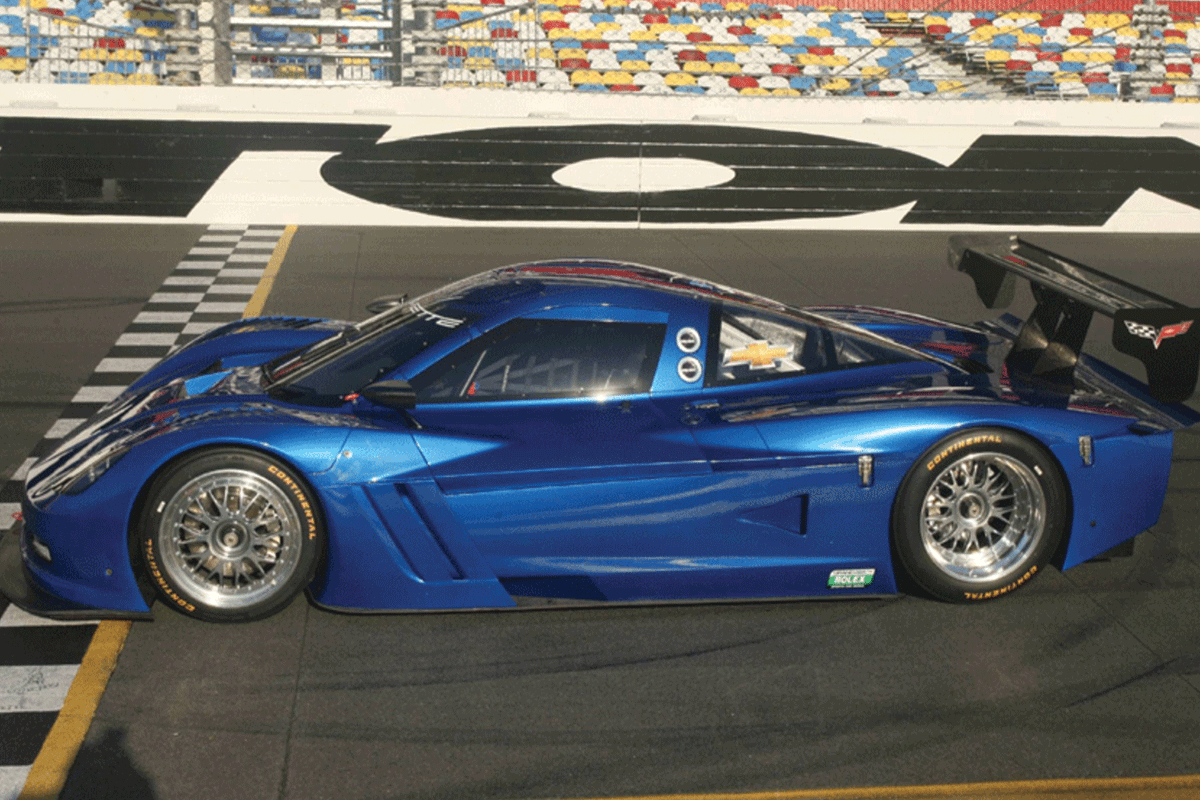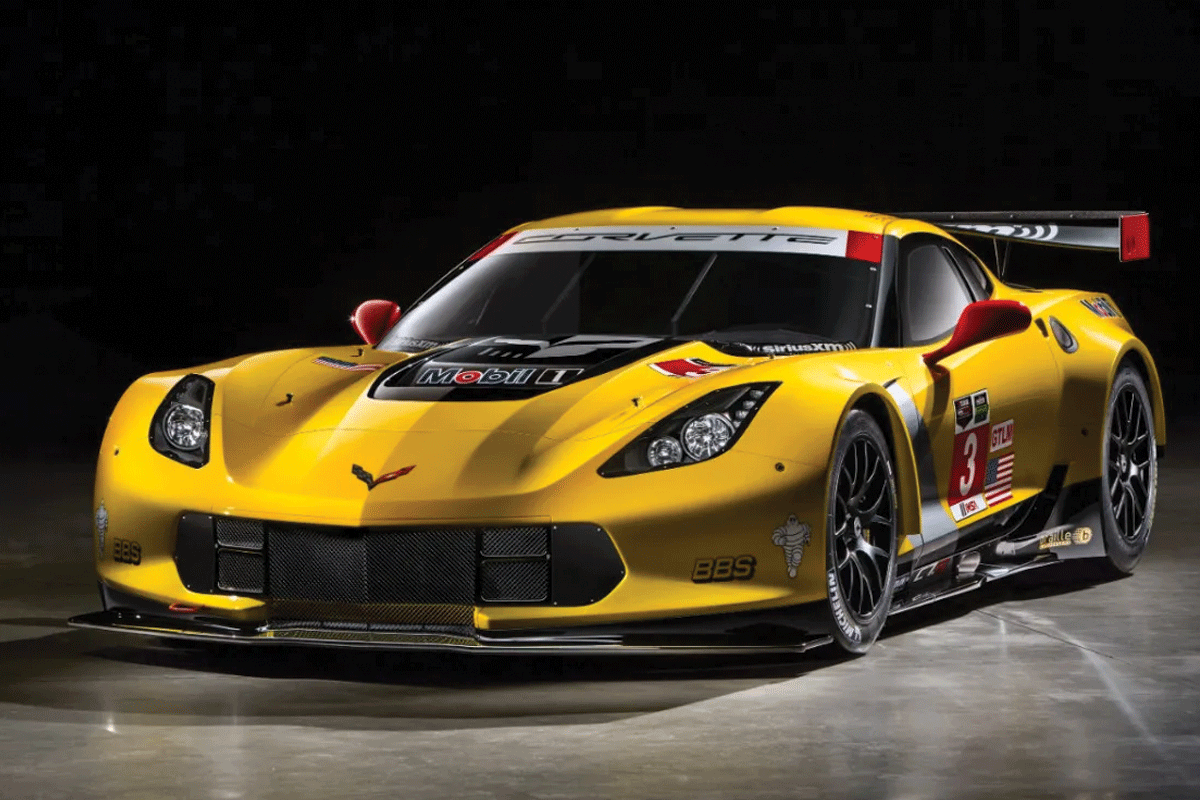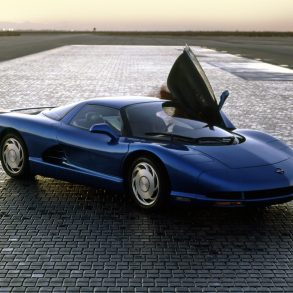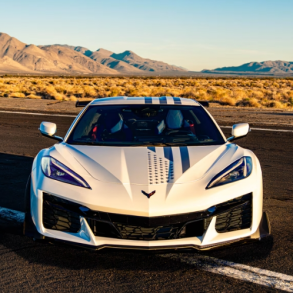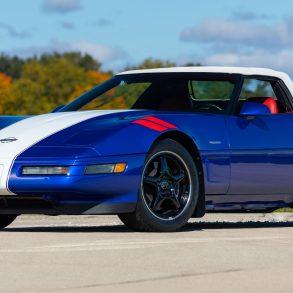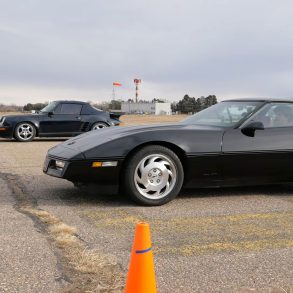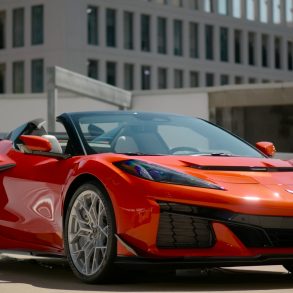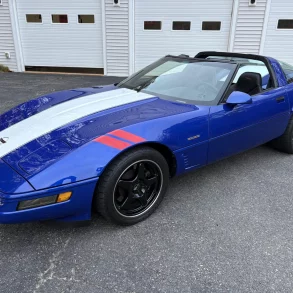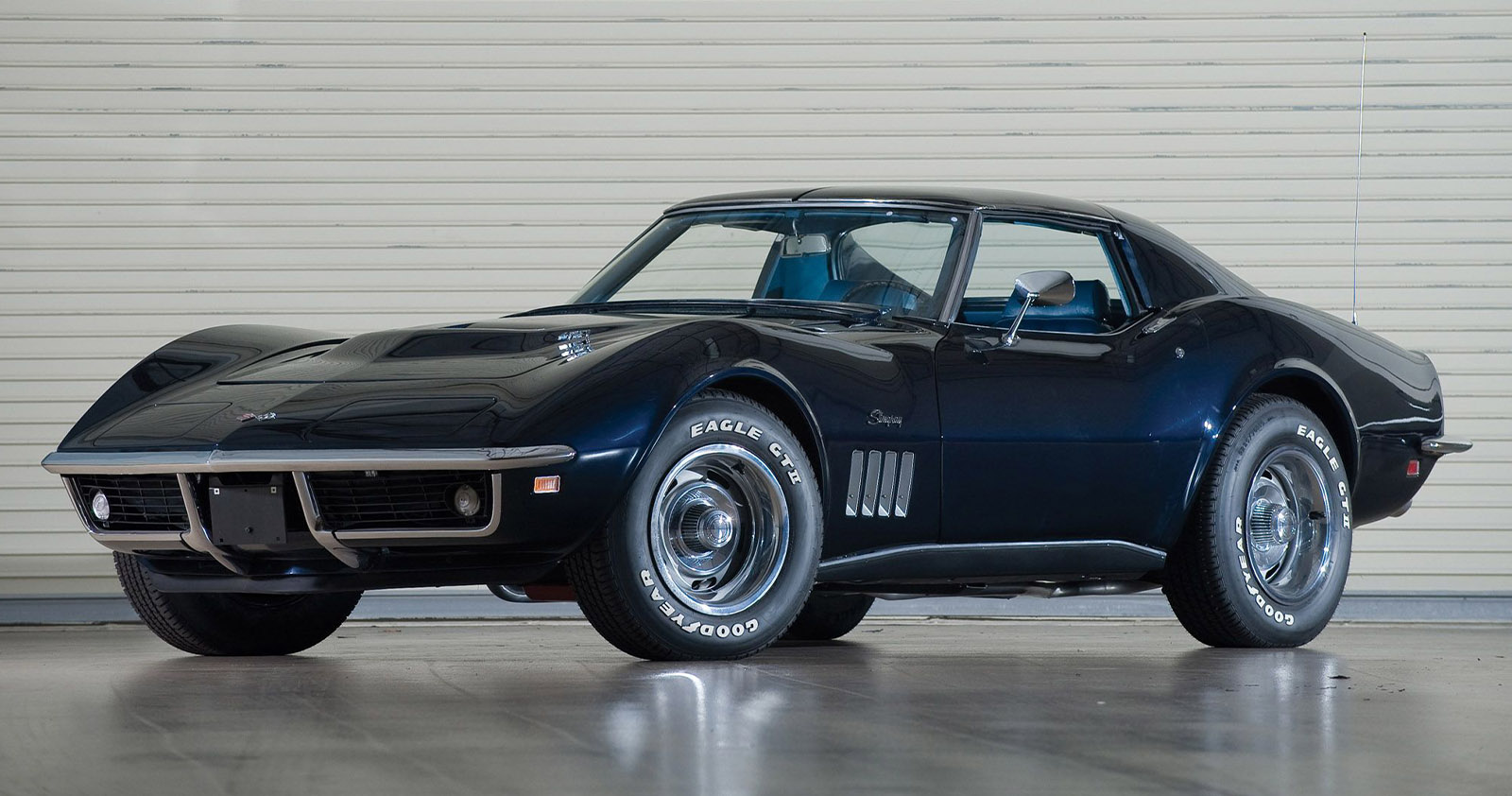As you enter through the doors of the Saratoga Automobile Museum in Saratoga Springs, New York, you’re reminded of an era when things were much simpler, with old school no cats muscle, basic drum brakes, carburetors galore, antiquated transmissions, and gas guzzling big blocks. When you walk through the corridors and the smell of old vinyl and rubber hits your nose, you’re instantly taken back to a time when the cost of gas prompted you to put the pedal to the metal in perpetuity.
While this remarkable exhibit, Speed-Style-Legacy, The CORVETTE Story, has ended, CorvSport has curated all thirteen featured Corvettes so you can join us for a virtual visit down the halls of Corvette history. From collectible C1s to the race-proven C7.R, whether you are new to the Corvette lifestyle or a seasoned enthusiast, be prepared to learn something as you browse through these examples of America’s Sports Car.
America’s Sports Car, The Lineup:
- 1954 Corvette
- 1957 Corvette FI, aka The Spirit of Zora
- 1959 Corvette Fuelie
- 1961 Mako Shark
- 1963 Corvette Z06 Split Window Tanker
- 1963 Corvette Grandsport
- 1969 Manta Ray
- 1972 Reynolds Aluminum Corvette (XP-895)
- 1972 Corvette Stingray
- 1978 Indy 500 Pace Car
- 2012 Corvette Daytona Prototype
- 2014 C7.R Race Car
- 2019 Corvette ZR1
Let’s get this adventure started!
1) 1954 Corvette
♦ On Loan Courtesy of Richard Rosetti
From the Museum:
The 1954 Chevrolet Corvette marks a pivotal moment in American automotive history. Released during the postwar automotive boom, the 1954 model solidified the Corvette as a symbol of American engineering and the growing desire for style and performance. While the 1953 debut was met with mixed reviews, the 1954 Corvette introduced significant refinements. It was a true reflection of Chevrolet’s commitment to delivering a sleek, powerful, and uniquely American sports car.
Only 3,640 Corvettes were produced in 1954, making this model a rare and treasured example of early American sports car design. Originally finished in the classic Polo White—one of the signature colors offered that year—this particular Corvette underwent a notable transformation in 1963. It was repainted at the Corvette Factory in St. Louis, Missouri, by none other than its original owner, Ken Brooks, who worked at the plant. The new finish, DuPont’s Fire Frost Silver—a striking color originally used on Cadillac models of the era—gives this car a distinctive presence that sets it apart from its contemporaries while still honoring its period roots.
Under the hood, the 1954 Corvette was powered by a 235-cubic inch inline-six engine, paired with a two-speed Powerglide automatic transmission, delivering 150 horsepower and a top speed of 110 mph. Though not as powerful as later V8 models, it provided a thrilling driving experience that laid the foundation for future high-performance versions. The Corvette’s design, with its long hood, graceful curves, and fiberglass body, set it apart from steel-bodied rivals, making it lighter and more competitive.
Its interior was equally stylish, featuring leather-trimmed seats and an elegant dashboard that emphasized both driver engagement and visual appeal. This Corvette, with just 25,000 original miles, stands as a remarkably well-preserved example of the model’s legacy. Since 2010, it has been lovingly cared for by Corvette enthusiast Richard Rosetti, who has continued its tradition of passionate ownership and preservation.
Today, the 1954 Corvette is a cherished classic, remembered for launching a legacy that continues to captivate automotive enthusiasts around the world. It stands as a cornerstone of American sports cars—a tribute to the engineers and designers who created a symbol of freedom, performance, and timeless beauty.
2) 1957 Corvette FI, aka The Spirit of Zora
♦ On loan courtesy of Michael Moss
From the CorvSport Archives:
The Spirit of Zora is what happens when passionate, like-minded men get together to pay homage to the racing roots of the grandfather of the Corvette. While Zora Arkus-Duntov needs little introduction, did you know about this little gem of a race car? The men who birthed the Spirit of Zora and call themselves TEAM ZORA USA came together in 2024 to celebrate America’s Sports Car and honor the legacy of Zora Arkus-Duntov. Their creation and quest are quite remarkable. The original founders were Michael Moss and Martyn Schorr, with Ken Kayser and John Cutrone later joining the team. Today’s feature, along with most of CorvSport’s digital content, is FREE and not behind a paywall. When any pop-ups appear, please click to dismiss them and continue enjoying the article.
Initially, the team had hoped to race the Spirit of Zora, a 1957 Corvette Fuelie, in various historic “Mille Miglia” racing events, starting with the 1000 Miglia Warm-Up event in the Washington D.C.-Virginia area last October. Unfortunately, those plans were delayed due to weather events and damages beyond their control. But there is a silver lining, because instead of racing around the track, the Spirit of Zora landed at the Saratoga Automobile Museum.
The museum’s Speed-Style-Legacy, The Corvette Story, highlights notable Corvettes from around the globe and runs until October 26. We’ll be doing a deeper dive into the whole exhibit soon, but now let’s get to know the Spirit of Zora a bit better. Then, we are going to take a journey, and I think you’ll enjoy it.
The Spirit of Zora Highlights:
- The Basics: 1957 Corvette Fuelie with a 283/283 HP V8, RPO-579C
- Transmission: Borg-Warner Close-Ratio T-10 Four-Speed, RPO-685
- Rear End: Positraction 3:70:1, RPO-677
- Induction: Rochester Ramjet Fuel-Injection
- Air Cleaner: 1957 “Sebring” dual filter-element
- Cylinder Heads: “539”
- Compression Ratio: 10.5:1
- Camshaft: Duntov “097” Solid-Lifter .393/.399-inch-lift, 287/287-degree-duration, lightweight valve train
- Crankshaft & Rods: Forged Steel
- Suspension, Brakes & Steering: HD Racing Components, 16.4:1 Fast Steering, RPO-684
- Wheels: 15×5.5-inch Wide Steel w/Small Hubcaps, RPO-276
- Tires: Dunlop CR65 Vintage Racing, 600L-15 w/#204 compound
- Interior: Column-Mounted 8,000-rpm AC Mechanical Tach (RPO-579D engine option), and Radio Delete Block-Off Plate
CONTINUE READING or SAVE FOR LATER
3) 1959 Corvette Fuelie
♦ On loan courtesy of Jack Gillette
From the Museum:
The 1959 Chevrolet Corvette Fuelie is a standout in Corvette history, symbolizing the perfect union of American engineering and raw performance. By the late 1950s, the Corvette had already established itself as a performance-oriented roadster, but the introduction of the Fuel Injection option in 1957 marked a leap forward, with the 1959 model offering one of the most refined iterations of this powerful system.
At the heart of the 1959 Corvette Fuelie was the 283-cubic inch V8 engine, which featured the newly improved Rochester mechanical fuel injection system. With the addition of this fuel injection, the engine produced a remarkable 290 horsepower, making the Fuelie one of the most powerful American production cars of its time. The Fuelie offered an incredible combination of power, speed, and efficiency, propelling the Corvette to a top speed of over 150 mph—an impressive feat for a car of its era.
In terms of design, the 1959 Corvette retained the distinctive styling that had been refined throughout the decade. The dual headlights, twin rear “gun sight” taillights, and smooth body lines created a visual identity that was unmistakable. The introduction of a new, slightly reshaped rear-end design with a more pronounced fin added a touch of elegance while still maintaining the aggressive stance that enthusiasts loved.
The interior was equally refined, with plush seats, a simple yet functional dashboard, and high-quality materials that made it clear that the Corvette was as much about luxury as it was about performance. With just over 9,000 units produced that year, the 1959 Corvette Fuelie was a rare and highly sought-after model, especially due to the performance capabilities and fuel-injected engine that set it apart from the standard 283 V8 models.
The 1959 Corvette also featured other improvements, such as a more comfortable ride with revised suspension tuning and updated chrome trim. These changes helped elevate the overall driving experience, making it not just a car built for speed but also a refined machine meant to be enjoyed on the open road.
As the 1950s came to a close, the 1959 Corvette Fuelie cemented the Corvette’s place as an American icon. It showcased the best of what Chevrolet had to offer—cutting-edge technology, thrilling performance, and unmistakable style. The Corvette’s reputation as a world-class sports car was further solidified with this model, setting the stage for future innovations and advancements.
Today, the 1959 Corvette Fuelie is considered one of the most desirable vintage Corvettes among collectors, revered for its powerful engine, stunning design, and historic significance. It remains a testament to the vision of Chevrolet’s engineers and designers, whose work helped transform the Corvette into an enduring symbol of American performance and automotive excellence.
4) 1961 Mako Shark
♦ On loan courtesy of General Motors LLC.
From the Museum:
The 1961 Mako Shark I Corvette was one of General Motors’ most striking concept cars, blending radical design with high-performance engineering. Inspired by a mako shark caught off the coast of Florida by William L. “Bill” Mitchell—then Vice President of GM Styling, now the General Motors Design Center—the car embodied the sleek, aggressive, and aerodynamic qualities of the predator that inspired it.
Mitchell’s vision for the Mako Shark was to capture the essence of its namesake. Its iridescent blue upper body seamlessly faded into a silvery-white underside, mirroring the natural countershading of the real-life shark. This gradient wasn’t just for aesthetics; it emphasized the car’s streamlined, aggressive stance, making it look as if it were cutting through water—or, in this case, air. The body itself previewed what would become the iconic 1963 Corvette Sting Ray, particularly with its sharp nose, hidden headlamps, and dramatic side-exit exhaust pipes. Many of these design elements would go on to define Corvette styling for decades.
Beyond its striking appearance, the Mako Shark I served as a rolling testbed for advanced Corvette engineering. Over the years, it housed several experimental powertrains, including a supercharged engine featuring four side-draft carburetors, a fuel-injected engine, and a V8 engine with dual four-barrel carburetors. Its final and most notable powerplant was a 1969 427 cubic inch ZL-1 Chevrolet V8, a rare all-aluminum engine that boasted an aluminum block, heads, and intake manifold. Equipped with a single four-barrel carburetor, this powerhouse produced more than 425 horsepower, delivering raw performance worthy of its shark-like namesake.
The Mako Shark I was more than just a show car—it set the stage for future Corvettes, particularly influencing the second-generation C2 Corvette Sting Ray (1963-1967) and later concept vehicles like the Mako Shark II and Manta Ray. Today, it remains one of the most celebrated concept cars in GM history, preserved as a crucial piece of Corvette’s design evolution in the GM Heritage Collection. As a symbol of automotive innovation, the Mako Shark I continues to capture the imagination of car enthusiasts worldwide, proving that inspiration can come from the most unexpected places—even the depths of the ocean.
5) 1963 Corvette Z06 Split Window Tanker
♦ On loan courtesy of Verrillo Motor Car
From the Museum:
The 1963 Chevrolet Corvette Z06 Tanker is a rare and highly coveted piece of Corvette’s racing legacy. Delivered new to Dexter Chevrolet in Detroit, Michigan, this Sebring Silver Corvette with a dark blue interior combines style with serious performance. What makes it exceptional is the pairing of the Z06 Special High-Performance Package with the rare N03 36½-gallon fuel tank—an option combination found on only 63 Corvettes in 1963.
The Z06 package, developed by Corvette’s Chief Engineer Zora Arkus-Duntov, was built for racing. It included metallic power brakes with a dual-reservoir master cylinder, heavy-duty stabilizers, shocks and springs, and a Posi-Traction rear axle. Its centerpiece was a 360-horsepower fuel-injected engine paired with a 4-speed manual transmission, delivering excellent speed and control. The Z06 also featured oversized brakes with “elephant ear” cooling ducts, internal fins, and metallic brake pads to meet racing demands.
Adding to its uniqueness, this Corvette came with the N03 “Big Tank” option—a 36½-gallon tank for endurance racing. Combined with 2-bar cast aluminum knock-off wheels, this Z06 Tanker stands as one of the rarest and most desirable Corvettes ever built.
Delivered by Dexter Chevrolet—the only Chevy dealer on Detroit’s 8 Mile Road and known for performance cars—this Corvette is believed to be a COPO (Central Office Production Order) model. Verified by the NCRS Shipping Data Report and listed in the C2 Corvette Registry, it includes features like the knock-off wheels that weren’t standard factory options, further highlighting its rarity.
After arriving in Michigan, the car later moved to Florida and was restored by a California collector to Concours standards. Eventually acquired by Joe Verrillo of Verrillo Motor Car, it has since earned top honors at major events, including an NCRS Top Flight Award in 2022, a Regional Top Flight Award in 2024, and a Bloomington Gold Award.
Today, this Corvette is a symbol of engineering excellence and Corvette’s racing heritage. With its rare Z06 and N03 combination, it stands as a pinnacle of 1960s performance. Joe Verrillo now sets his sights on even greater accolades, aiming for a Gold Concours award at MCACN and the coveted Triple Diamond Award.
6) 1963 Corvette Grandsport
♦ On loan courtesy of the Revs Institute
From the Museum:
Born to battle Carroll Shelby’s Cobras the Corvette Grand Sport was Chevrolet’s secret weapon. Nearly 1000 pounds lighter than the production Sting Ray and packing 500 horsepower it was designed for dominance in GT World Championship racing.
But General Motors’ corporate ban on factory-backed racing killed the project almost as soon as it began. Of the planned 125 cars only five were built in 1962 before the program was axed. And without the 100 cars required to run in GT the Grand Sports were forced to compete in C Modified a class far from their intended battlefield.
At the heart of the Grand Sport was Zora Arkus-Duntov Corvette’s visionary chief engineer and “Father of the Corvette.” Determined to showcase his lightweight creation’s potential Duntov and a group of Chevrolet engineers “on vacation” in the Bahamas upgraded three Grand Sports with 377-cubic-inch aluminum V8 engines for the 1963 Nassau Speed Week. Entered under privateer John Mecom’s name the cars driven by Roger Penske Jim Hall and Dick Thompson stunned onlookers by handily defeating the Cobras in a series of thrilling races.
After Nassau the five Grand Sports continued to make appearances on American tracks. Campaigned by privateers they ran in SCCA events at Sebring Watkins Glen and Bridgehampton earning occasional victories and cementing their reputation as fierce competitors. Even as newer more advanced race cars emerged the Grand Sports held their own for several seasons and became beloved icons among enthusiasts.
Though their time on the track was brief the Corvette Grand Sports remain one of Chevrolet’s most celebrated “what might have been” stories. With only five ever built these cars stand as rare symbols of Zora Duntov’s vision and the untapped racing potential of the Corvette.
7) 1969 Manta Ray
♦ On loan courtesy of General Motors LLC.
From the Museum:
The 1969 Manta Ray concept was an evolution of the 1965 Mako Shark II, reworked and refined at the GM Design Studio before emerging with a new name and updated styling. William L. “Bill” Mitchell, GM’s visionary head of design, was an avid deep-sea fisherman with a deep appreciation for the natural world. While on one of his many fishing excursions, he was captivated by the way a manta ray moved effortlessly through the ocean. That moment of inspiration led to the creation of the Corvette Mako Shark II and, ultimately, the Manta Ray—both dream cars that shaped the future of Corvette design.
Though the original Mako Shark II was an aggressive, futuristic concept, the Manta Ray introduced refinements that brought it closer to production reality. Among its most notable updates were more practical side pipes and an innovative aerodynamic feature on the rear deck. Twin rear-mounted doors would pop up under hard braking, serving as both air brakes and reflective auxiliary brake lights—an early nod to active aerodynamics.
The Manta Ray retained the striking, streamlined body that had made the Mako Shark II famous, with its sharp, pointed nose, dramatic fender flares, and a flowing fastback roofline. It continued to influence Corvette styling well into the 1970s, particularly in the third-generation (C3) Corvette, which carried forward many of its bold design cues.
As one of GM’s most celebrated concept cars, the Manta Ray remains a key part of the company’s design legacy. Housed in the GM Heritage Collection, it stands as a testament to Mitchell’s belief that automotive design should be as elegant and powerful as the natural world itself. Even today, the Manta Ray continues to inspire, proving that some of the most breathtaking cars ever built were first dreamed up far beneath the ocean’s surface.
8) 1972 Reynolds Aluminum Corvette (XP-895)
♦ On loan courtesy of General Motors LLC.
From the Museum:
The 1972 Reynolds Aluminum Corvette, also known as the XP-895, was part of a series of experimental Corvettes designed to explore alternative engine placements and chassis layouts. At a time when GM was considering the future of the Corvette, engineers were actively experimenting with mid-engine configurations, a concept that would take decades to reach production but remained a persistent vision for the brand.
The XP-895 featured a 400 cubic inch small-block V8, mounted transversely in a mid-engine layout. Power was delivered through a Turbo Hydramatic transmission via a bevel gearbox, a unique setup that contributed to the car’s innovative packaging. With its drivetrain positioned behind the driver, the XP-895 aimed to achieve better weight distribution and handling characteristics compared to the traditional front-engine Corvettes of the era.
What set this particular XP-895 apart was its all-aluminum body, the result of a collaboration between GM and Reynolds Aluminum. At a time when automotive manufacturers were seeking ways to improve fuel efficiency and performance, aluminum was seen as a promising lightweight alternative to traditional steel. Two versions of the XP-895 were built—one in steel and this one in aluminum, serving as a testbed for the feasibility of mass-producing lightweight metal body panels. Hidden headlights were incorporated into the sleek design to maintain the lowest possible front profile, further enhancing the car’s aerodynamic efficiency.
While the XP-895 never reached production, it played a crucial role in Corvette’s long history of innovation. Its mid-engine configuration foreshadowed the eventual arrival of the eighth-generation (C8) Corvette, which finally brought the mid-engine dream to reality nearly five decades later. Today, the aluminum-bodied XP-895 remains a significant piece of GM’s experimental legacy, housed in the GM Heritage Collection as a reminder of the brand’s relentless pursuit of performance and technological advancement.
9) 1972 Corvette Stingray
♦ On loan courtesy of Verrillo Motor Car
From the Museum:
The 1972 Chevrolet Corvette marked the end of an era. As the final model year of the second-generation Corvette, it retained the classic styling and performance that had made the car iconic, while introducing some subtle but important changes. Most notably, 1972 was the last year to feature the iconic chrome bumpers, a hallmark of Corvette design for nearly two decades.
The car continued the sleek lines and aggressive stance that made the C3 models so popular. With its distinctive “egg-crate” grille, flowing contours, and signature quad headlights, the 1972 Corvette was a striking example of American muscle and design. Unlike its predecessors, however, it would be the last to include both front and rear chrome bumpers before the 1973 switch to federally mandated 5-mph impact bumpers.
Under the hood, the 1972 Corvette offered several engine options, including a 350-cubic inch V8 producing 200 horsepower in the base model. Although horsepower dropped slightly due to stricter emissions standards, the car still delivered a thrilling driving experience with ample torque. For many enthusiasts, its true appeal lay in its balance of power and refinement.
One of the rarest and most desirable options for the 1972 Corvette was air conditioning (A/C), a feature uncommon in performance cars of the time. Only a small percentage of 1972 models were equipped with A/C, making it a luxurious and sought-after upgrade. In a time when A/C was still considered a luxury, its availability reflected the Corvette’s growing appeal to a wider audience.
Inside, the cabin blended performance with comfort. Leather seats, a driver-focused dashboard, and a clean, functional layout made the car enjoyable to drive. While the A/C added comfort, the overall interior design kept the focus on driving pleasure.
With just under 30,000 units produced, the 1972 Corvette remains a highly collectible model. It marked the end of the chrome bumper era and bridged the gap between classic Corvette design and the evolving C3 style of the mid-1970s. For collectors, the 1972 Corvette represents a lasting legacy—combining timeless design with performance and rare luxury.
10) 1978 Indy 500 Pace Car
♦ On loan courtesy of General Motors LLC.
From the Museum:
In 1978 Chevrolet marked the 25th anniversary of the Corvette with a milestone achievement: for the first time in its history the Corvette was selected as the official pace car for the Indianapolis 500. To honor the occasion Chevrolet produced a limited-edition pace car replica—an instantly iconic model that blended Corvette performance with racing heritage and bold design.
The 1978 Pace Car Edition stood out with its dramatic black-over-silver two-tone paint front and rear spoilers mirrored T-top roof panels and unique “Indy 500” badging. Inside the cabin featured silver leather or cloth upholstery sport seats and a commemorative dashboard plaque—adding to the car’s sense of occasion and collectability.
Under the hood the car retained the Corvette’s classic 5.7-liter (350 cubic inch) V8 engine delivering between 185 and 220 horsepower depending on the drivetrain configuration. Available with either a 3-speed automatic or 4-speed manual transmission the Pace Car Edition combined American muscle with everyday drivability.
Originally Chevrolet planned to build just 300 units but overwhelming demand led to the production of 6502 replicas—one for every Chevrolet dealer in the United States. Today the 1978 Corvette Pace Car Edition remains a cherished symbol of Corvette history American automotive enthusiasm and the enduring bond between racing and design.
11) 2012 Corvette Daytona Prototype
♦ On loan courtesy of General Motors LLC.
From the Museum:
The 2012 Corvette Daytona Prototype was a groundbreaking race car that brought Corvette’s legacy of performance to the highest levels of endurance racing. Developed through a collaboration between General Motors, Pratt & Miller Engineering, and key racing partners, the Daytona Prototype was built to compete in the Grand-Am Rolex Sports Car Series, marking Corvette’s official return to prototype racing for the first time in over a decade.
Inspired by Corvette’s rich motorsports heritage, the design of the Daytona Prototype carried signature Corvette styling cues, including the bold front grille, sculpted fenders, and iconic crossed-flag badging. Beneath its aerodynamic carbon-fiber bodywork, the car was powered by a naturally aspirated 5.0L Chevrolet V8 engine, delivering over 500 horsepower. This engine, based on Chevrolet’s small-block architecture, was designed to balance high-performance capabilities with the durability required for endurance racing.
One of the key innovations of the 2012 Corvette Daytona Prototype was its combination of advanced aerodynamics and a rigid yet lightweight chassis, allowing it to maintain stability at high speeds while enduring the punishing demands of long-distance racing. The car’s aggressive development paid off quickly, as it made an immediate impact in competition. In its debut season, teams running the Corvette Daytona Prototype secured multiple victories, including a dominant performance at the prestigious Rolex 24 at Daytona.
The success of the Daytona Prototype reinforced Corvette’s position as a dominant force in motorsports and helped shape the future of Chevrolet’s racing program. It also laid the foundation for future Corvette prototype efforts, influencing the design and engineering of subsequent endurance racing machines. Today, the 2012 Corvette Daytona Prototype stands as a testament to GM’s commitment to pushing the limits of performance and innovation, forever cementing its place in Corvette’s storied racing history.
12) 2014 C7.R Race Car
♦ On loan courtesy of General Motors LLC.
From the Museum:
The 2014 C7.R race car was a milestone in Corvette’s long and storied motorsports history, debuting as the factory-backed endurance racing version of the seventh-generation Corvette Stingray. Developed by General Motors and Pratt & Miller Engineering, the C7.R was designed to compete at the highest levels of endurance racing, including the IMSA WeatherTech SportsCar Championship and the legendary 24 Hours of Le Mans.
Built on the foundation of the production C7 Corvette Z06, the C7.R shared key structural elements with its road-going counterpart, including an aluminum frame that was 40% stronger than its predecessor, the C6.R. This marked the first time a Corvette race car had been developed alongside its production counterpart, demonstrating the direct link between Chevrolet’s race and street programs. Under the hood, the C7.R was powered by a 5.5L naturally aspirated V8, optimized for endurance racing with improved reliability and efficiency. Advanced aerodynamics, a wider stance, and a more aggressive suspension setup gave the C7.R superior handling and downforce, making it one of the most formidable cars in its class.
In competition, the C7.R quickly proved its dominance. In its debut season, it secured major victories, including the Rolex 24 at Daytona and the Mobil 1 Twelve Hours of Sebring, solidifying Corvette Racing’s reputation as a powerhouse in endurance racing. The car also continued Chevrolet’s rich tradition at Le Mans, battling some of the world’s best manufacturers on one of motorsport’s biggest stages.
Beyond its success on the track, the C7.R played a crucial role in Corvette’s racing legacy, setting the stage for the next generation of competition cars, including the C8.R. Today, it remains a celebrated part of GM’s Heritage Collection, a symbol of the relentless pursuit of speed, endurance, and innovation that defines Corvette Racing.
13) 2019 Corvette ZR1
♦ On loan courtesy of Verrillo Motor Car
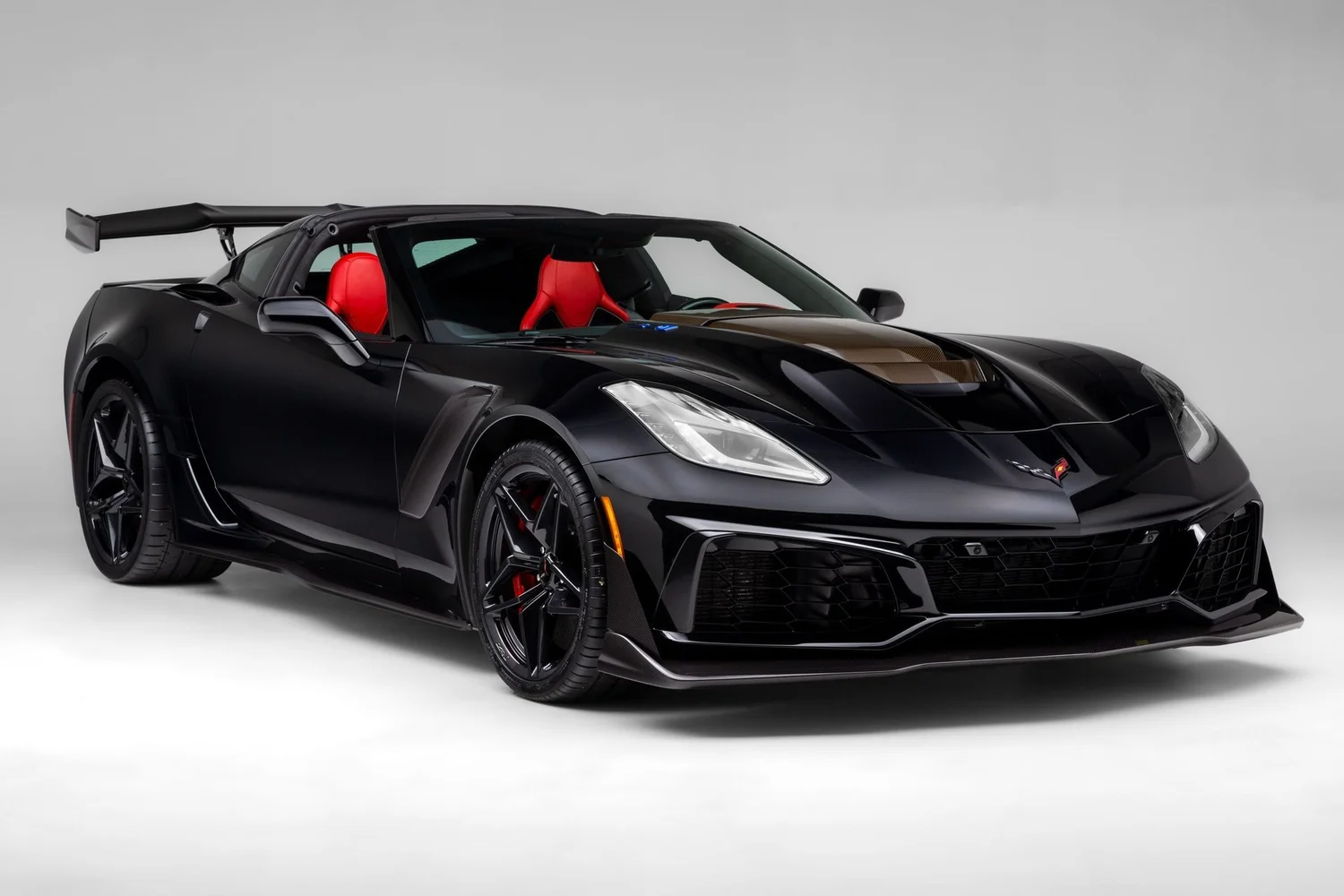
From the Museum:
The 2019 Chevrolet Corvette ZR1 represents the pinnacle of Corvette performance, blending extreme power, advanced technology, and striking design to create one of the most formidable production cars ever built by Chevrolet. As the most powerful Corvette to date at its release, the ZR1 elevated the Corvette legacy, earning its place among the world’s elite supercars.
At its heart is a supercharged 6.2-liter LT5 V8 engine producing 755 horsepower and 715 lb-ft of torque. Paired with either a 7-speed manual or 8-speed automatic transmission, the ZR1 delivers blistering acceleration and a top speed exceeding 210 mph. These figures place it well beyond previous Corvette benchmarks, providing an unmatched driving experience.
Performance is about more than just raw power. The ZR1 features an upgraded suspension, magnetic ride control, and a race-focused aerodynamics package. Its massive adjustable rear wing and front splitter generate serious downforce, enhancing high-speed stability. Combined with razor-sharp handling, this setup allows the ZR1 to dominate both track and street.
Visually, the 2019 ZR1 exudes aggression and intent. A wide body, functional air intakes, and carbon fiber accents give it a bold presence. Available as a coupe with a removable roof panel or as a convertible, the ZR1 offers open-air excitement without compromising performance.
Inside, the cabin blends luxury with a performance mindset. Leather and suede accents create a refined yet sporty environment, while advanced tech like Apple CarPlay and a premium sound system enhance the drive. Despite its race-inspired roots, the ZR1 remains comfortable and street-friendly.
The 2019 Corvette ZR1 is the culmination of decades of Corvette innovation. With just over 2,000 units produced, it stands as a rare and thrilling example of American engineering. Competing with the world’s top supercars, it maintains the Corvette’s unique blend of performance, character, and accessibility.
Today, the ZR1 is a modern classic, highly sought after by collectors and enthusiasts. Its bold performance, iconic design, and engineering excellence ensure it remains a benchmark for what a high-performance Corvette should be: powerful, precise, and unforgettable.
Thanks for joining us today on this Corvette journey. Do you have a favorite ‘Vette from today’s museum tour? Join the CorvSport movement!
- Engage with CorvSport’s 168,000 Facebook followers and be the first to see our daily content.
- Experience how obsessed we are and view our top 25 monthly features by visiting our digital magazine, CORVETTE OBSESSED.
- Enjoy an ad-free experience, get exclusive content, and support CorvSport for only $2.92/month!


